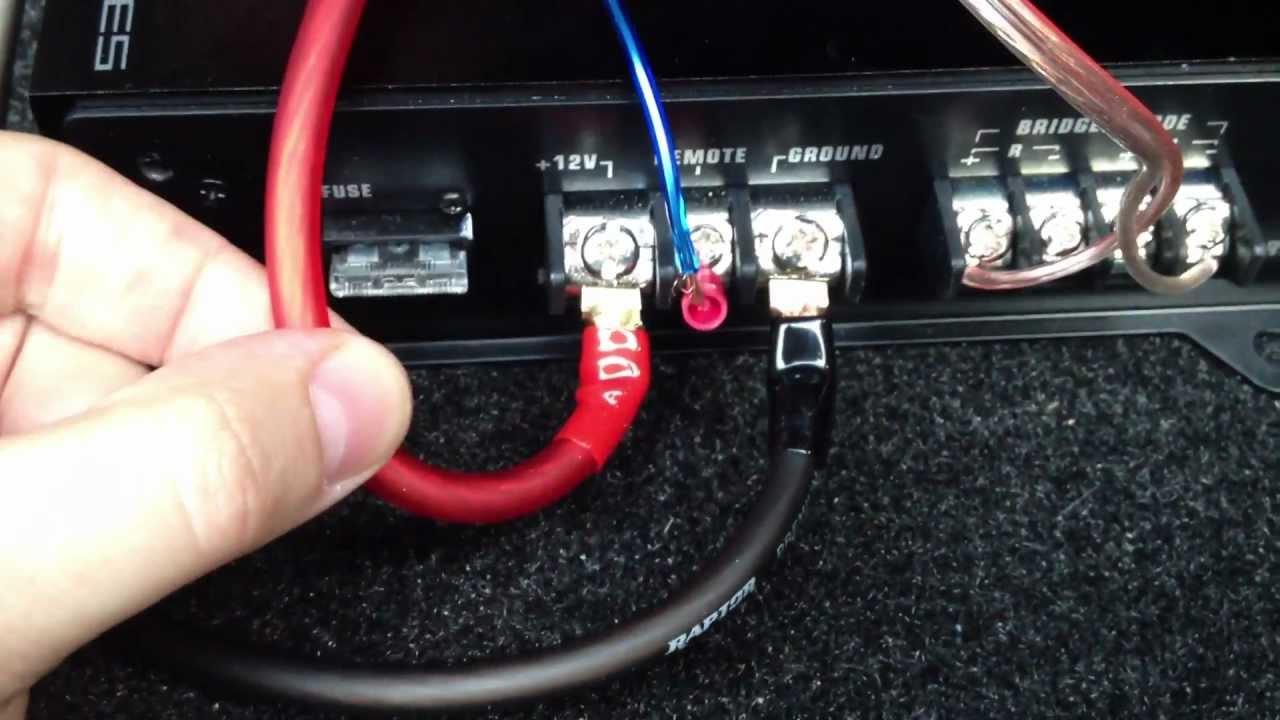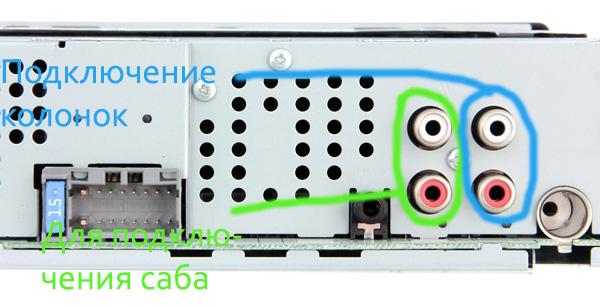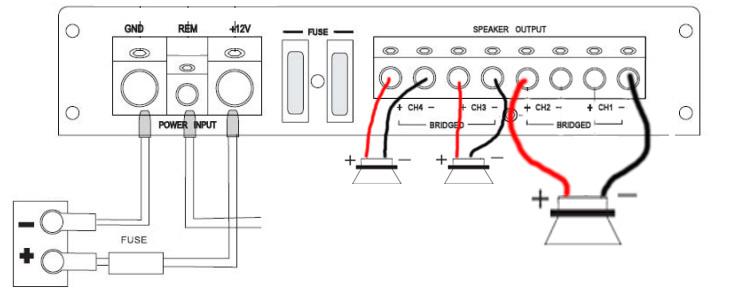
How to connect a car amplifier with your own hands
Content
⭐ ⭐ ⭐ ⭐ ⭐ At first glance, connecting an amplifier to a car may seem complicated. Lay power, connect the radio and speakers. But if you have a good step-by-step instruction in your hands, there will be no problems, and it doesn’t matter if a 4 or 2-channel amplifier is used. Do not rush to contact a car service, installation by specialists will be expensive, so in order to save money, you should try to figure out the connection yourself, this article will help you.
For the amplifier to work, you need:
- Give him good food;
- Give a signal from the radio. You can read more detailed information by examining the connection diagram of the radio;
- Connect speakers or subwoofer.

For more information on how to connect an amplifier, see below.
Good nutrition is the key to success
The procedure for connecting the amplifier begins with power wires. Wiring is the most important element of a car audio system, it determines the volume and sound quality. Amplifiers need a stable power supply, because otherwise there will not be enough power, because of this, the sound will become distorted. To understand why you need to pay attention to the quality of the wiring and how it affects the sound reproduced by the loudspeaker, you need to know what a music signal is.
Some suggest that it represents a sine, however, musical singal is characterized by a large difference between normal and peak value. If for the speakers of car acoustics, sharp bursts of signal are not fundamental, then in the case of an amplifier, the situation is completely different. If the signal even for a second (or even a millisecond) exceeds the allowable power, then these "anomalies" will be audible even for those who cannot boast of a good ear for music.
If the connection of the car amplifier was done properly, then the signal will go through the wires in an undistorted form. Carelessly done work or incorrectly selected wire size will cause the sound to be more clamped, rough and sluggish. In some cases, wheezing may also be clearly audible.
How to choose wire size?
Wire is the most common metal that has a certain level of resistance. The thicker the wire, the lower the resistance of the wire. To avoid sound distortion during large voltage fluctuations (for example, during powerful bass playback), it is necessary to install a wire of the correct gauge.
It should be noted that the cross section of the positive cable should not be greater than the negative one (the length does not matter).
The amplifier is considered to be a rather electrically intensive device. For its effective operation, high-quality grounding is necessary so that it is possible to receive the necessary energy from the battery.
To choose the right cross-section of wires, you need to do some calculations. To get started, look in the instructions for the amplifier (or directly on the box from the manufacturer, if there is no documentation, use the Internet) and find the value of the rated power (RMS) there. Rated power is the signal power of the amplifier that it can deliver for an extended period of time into one channel of 4 ohms.
If we consider four-channel amplifiers, they usually have a power of 40 to 150 watts per channel. Let's say the amplifier you've purchased puts out 80 watts of power. As a result of simple mathematical operations, we find out that the total power of the amplifier is 320 watts. Those. how did we calculate it? it's very simple to multiply the rated power by the number of channels. If we have a two-channel amplifier with a rated power (RMS) of 60 watts, then the total will be 120 watts.
After you calculate the power, it is also desirable to determine the length of the wire from the battery to your amplifier and you can safely use the table to select the desired wire section. How to use the table? On the left side, the power of your amplifier is indicated, on the right, choose the length of the wire, go up and find out what section you need.

The table shows the sections of copper wires, remember that a large number of sold wires are made of aluminum coated with copper, these wires are not durable and have more resistance, we recommend using copper wires.
Fuse selection
In order to secure the connection of a car amplifier, it is necessary to protect the power supply from the battery to the amplifier using a fuse. Fuses should be placed as close to the battery as possible. It is important to distinguish between a fuse that protects the device itself (whether it will be an amplifier or a radio tape recorder), and a fuse installed on the power wire.
The latter is needed in order to protect the cable itself, since a considerable current flows through it.
Be sure to match the fuse ratings, as if the wiring fuse rating is too high, the wire may burn out as a result of a short circuit. If the value, on the contrary, is less, then the fuse at the time of peak loads can easily burn out and then there will be no other way out than buying a new one. The table below shows the wire size and the required fuse rating.

We connect the interconnect wires and control (REM)
To lay the cable, you need to find a line-out on the radio. The line output can be recognized by the characteristic "bells" that are located on the rear panel of the radio. The number of line outputs differs in different radio models. Usually there are from one to three pairs. Basically, they are distributed as follows: 1 pair - you can connect a subwoofer or 2 speakers (signed as SWF) If there are 2 pairs of them, you can connect 4 speakers or a subwoofer and 2 speakers (the outputs are signed F and SW), and when there are 3 pairs of linear wires on the radio, you can connect 4 speakers and a subwoofer (F, R, SW) F This is Front i.e. front speakers, R Read rear speakers, and SW Sabwoorer I think everyone understands that.
Does the radio have line outputs? Read the article "How to connect an amplifier or subwoofer to a radio without line outputs."

To connect, you will need an interconnect wire, which in no case can be saved. It is forbidden to lay an interconnect cable near the power wires, since various kinds of interference will be heard during engine operation. You can stretch the wires both under the floor mats and under the ceiling. The latter option is especially relevant for modern cars, in the cabin of which there are electronic accessories that interfere.
You also need to connect the control wire (REM). As a rule, it comes with interconnect wires, but it happens that it is not there, purchase it separately, it is not necessary that it be of a large cross section of 1 mm2 is enough. This wire serves as a control to turn on the amplifier, i.e. when you turn off the radio, it automatically turns on your amplifier or subwoofer. As a rule, this wire on the radio is blue with a white stripe, if not, then use the blue wire. It connects to the amplifier to a terminal called REM.
Amplifier connection diagram
Connecting a two-channel and four-channel amplifier

We have combined this section, because these amplifiers have a very similar connection scheme, it can even be said more simply, a four-channel amplifier is two two-channel. We will not consider connecting a two-channel amplifier, but if you figure out how to connect a four-channel amplifier, then you will not have problems connecting a two-channel one. Most car enthusiasts choose this option for their installations, because 4 speakers can be connected to this amplifier, or 2 speakers and a subwoofer. Let's look at connecting a four-channel amplifier using the first and second options.
Connecting a 4-channel amplifier to a battery is recommended using a thick cable. How to choose the right power wires and connect interconnects is all we have discussed above. Amplifier connections are usually specified in the instructions from the manufacturer. When an amplifier is connected to acoustics, it operates in stereo mode; in this mode, this type of amplifier can operate under a load of 4 to 2 ohms. Below is a diagram of connecting a four-channel amplifier to speakers.

Now let's look at the second option, when speakers and a subwoofer are connected to a four-channel amplifier. In this case, the amplifier operates in mono mode, it takes voltage from two channels at once, so try to choose a subwoofer with a resistance of 4 ohms, this will save the amplifier from overheating and going into protection. Connecting a subwoofer will not be a problem, as a rule, the manufacturer indicates on the amplifier where to get a plus for connecting a subwoofer, and where a minus. Take a look at the diagram of how a 4 channel amplifier is bridged.
Connecting a monoblock (Single-channel amplifier)
Single channel amplifiers are used for only one purpose - to connect to a subwoofer. A notable characteristic of amplifiers of this kind is increased power. Monoblocks are also capable of operating below 4 ohms, which is called a low-resistance load. Monoblocks are classified as class D amplifiers, while they have a special filter for cutting frequencies.
Installing a single-channel amplifier does not require much effort, since its connection diagrams are very simple. There are two outputs in total - “plus” and “minus”, and if the speaker has only one coil, then you just need to connect it to it. If we are talking about connecting two speakers, then they can be connected either in parallel or in series. Of course, it is not necessary to be limited to only two speakers, but before connecting the amplifier and subwoofer to the radio, will the latter cope with a high level of resistance.
Did you hear any noise in the speakers after connecting the amplifier? Read the article "how to deal with extraneous sounds from the speakers."
Video how to properly connect a four-channel and single-channel amplifier
Conclusion
We have put a lot of effort into creating this article, trying to write it in a simple and understandable language. But it is up to you to decide if we did it or not. If you still have questions, create a topic on the "Forum", we and our friendly community will discuss all the details and find the best answer to it.
And finally, do you want to help the project? Subscribe to our Facebook community.